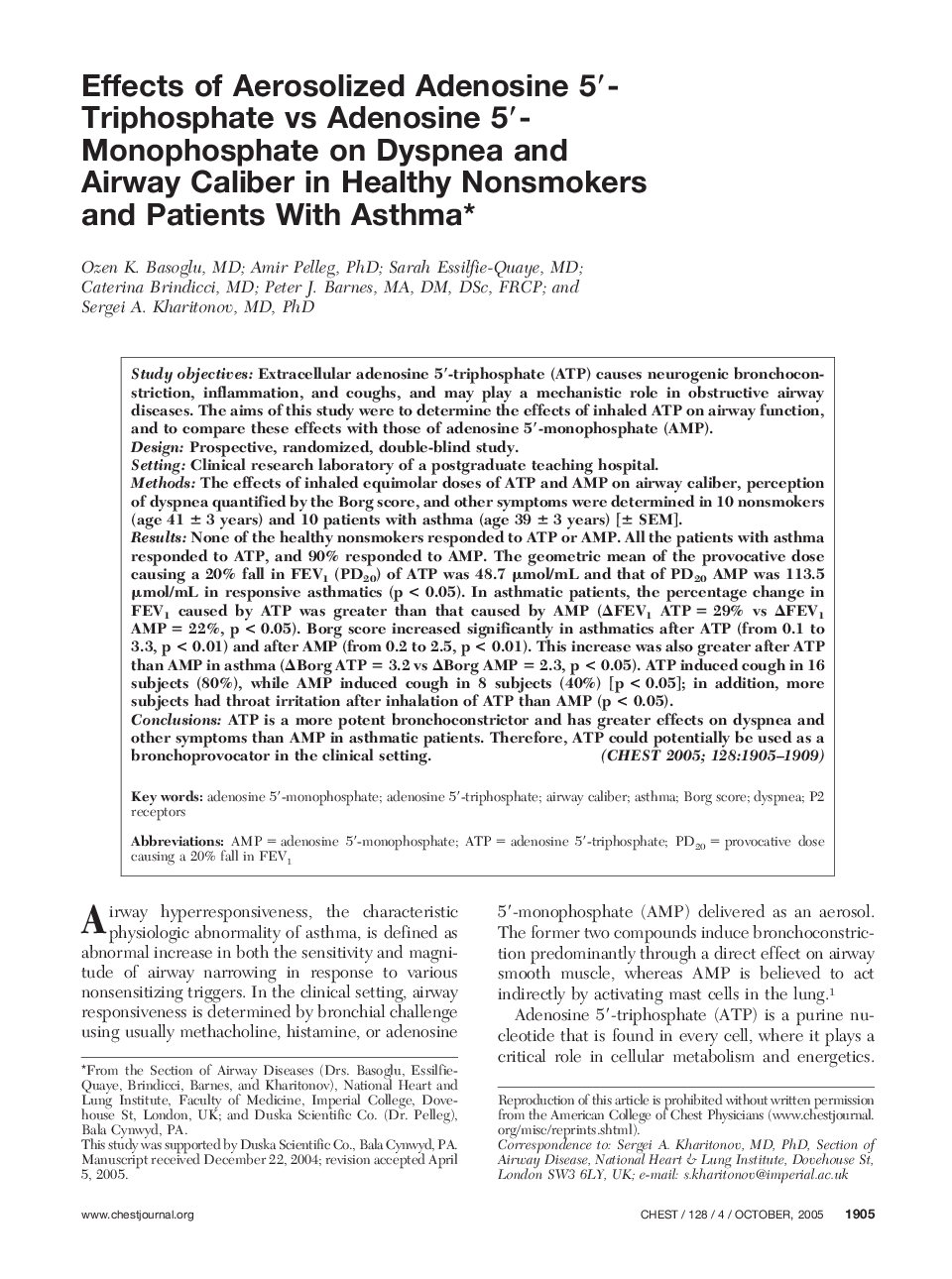| کد مقاله | کد نشریه | سال انتشار | مقاله انگلیسی | نسخه تمام متن |
|---|---|---|---|---|
| 2907060 | 1173488 | 2005 | 5 صفحه PDF | دانلود رایگان |

Study objectivesExtracellular adenosine 5′-triphosphate (ATP) causes neurogenic bronchoconstriction, inflammation, and coughs, and may play a mechanistic role in obstructive airway diseases. The aims of this study were to determine the effects of inhaled ATP on airway function, and to compare these effects with those of adenosine 5′-monophosphate (AMP).DesignProspective, randomized, double-blind study.SettingClinical research laboratory of a postgraduate teaching hospital.MethodsThe effects of inhaled equimolar doses of ATP and AMP on airway caliber, perception of dyspnea quantified by the Borg score, and other symptoms were determined in 10 nonsmokers (age 41 ± 3 years) and 10 patients with asthma (age 39 ± 3 years) [± SEM].ResultsNone of the healthy nonsmokers responded to ATP or AMP. All the patients with asthma responded to ATP, and 90% responded to AMP. The geometric mean of the provocative dose causing a 20% fall in FEV1 (PD20) of ATP was 48.7 μmol/mL and that of PD20 AMP was 113.5 μmol/mL in responsive asthmatics (p < 0.05). In asthmatic patients, the percentage change in FEV1 caused by ATP was greater than that caused by AMP (ΔFEV1 ATP = 29% vs ΔFEV1 AMP = 22%, p < 0.05). Borg score increased significantly in asthmatics after ATP (from 0.1 to 3.3, p < 0.01) and after AMP (from 0.2 to 2.5, p < 0.01). This increase was also greater after ATP than AMP in asthma (ΔBorg ATP = 3.2 vs ΔBorg AMP = 2.3, p < 0.05). ATP induced cough in 16 subjects (80%), while AMP induced cough in 8 subjects (40%) [p < 0.05]; in addition, more subjects had throat irritation after inhalation of ATP than AMP (p < 0.05).ConclusionsATP is a more potent bronchoconstrictor and has greater effects on dyspnea and other symptoms than AMP in asthmatic patients. Therefore, ATP could potentially be used as a bronchoprovocator in the clinical setting.
Journal: Chest - Volume 128, Issue 4, October 2005, Pages 1905–1909